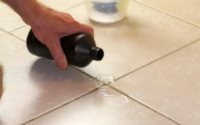How To Insulate Basement Walls
[caption id="attachment_17171" align="alignnone" width="1024"] image source : pixels.com[/caption]
Among the most common questions asked by homeowners is how to insulate basement walls. It is an important step in the home improvement process and can help keep the area comfortable. This article will discuss the different types of insulation available and how to choose the best one for your basement. In addition to the types of insulation, you'll also want to consider the moisture control in the area. Non-insulated foundation walls can lose a lot of heat and moisture, which can make the basement feel colder than the rest of the house.
Before you decide to insulate basement walls, you should make sure that the frame wall is insulated and sealed to prevent moisture from leaking in. You can also protect it from fire by adding a layer of foam board insulation. Generally, you can apply foam board insulation yourself. It is made from polyurethane or polystyrene and is very effective at keeping the basement cool. If you plan to install this type of insulation yourself, be sure to hire a professional to do the job.
Use a Foam Board Insulation to complete step How To Insulate Basement Walls
[caption id="attachment_17172" align="alignnone" width="1024"] image source : google.com[/caption]
Another option for basement wall insulation is foam board insulation. These are made from polyurethane or polystyrene. These types of insulation offer good temperature control and structural stability. To make sure that your insulation is secure, you'll need to use construction adhesive to secure it to the basement wall. However, you shouldn't nail it to the wall. This could cause holes in the insulation. In addition, foam board insulation may not be ideal for your basement walls.
Address The Moisture Issue In The Basement
[caption id="attachment_17173" align="alignnone" width="960"] image source : google.com[/caption]
Before installing insulation, you need to address the moisture issue in the basement. Before you apply insulation, you can perform a moisture test by putting up plastic sheeting on the bare concrete wall and taping the edges with an impermeable duct tape border. After 48 hours, check whether the plastic sheeting has any condensation. If it is, water is seeping through. You need to install an appropriate waterproof barrier for your basement.
After the insulation is in place, you must cover it with drywall. If you're using rigid foam, you'll need to use a thermal barrier between the wall and the insulation. You can use mineral wool insulation for this purpose, but you should be sure to make sure that you're putting in the right amount of foam in the basement. It's vital to insulate the walls and the basement of the house.
Besides the vapor barrier, you should also make sure to insulate the walls of the basement. A vapor barrier will prevent water from penetrating the wall, which is a vital part of the home. If you can't afford to install an air-tight barrier, use a flexible foam instead. Regardless of how you insulate basement walls, you'll be happy you did.
When choosing a material for the insulation, you should choose a vapor barrier board. The vapor barrier is a barrier between the concrete and the studs. The board should be firmly fastened to the walls with adhesive or concrete nails. It should be applied from bottom to top. When installing a vapor barrier, it is essential to seal the walls to avoid the buildup of mold and moisture.
The best material to use is a foam. Foam is a good choice if you want to insulate concrete walls. It is very easy to install and requires little maintenance. It is also very affordable. There are many types of foam for basement walls. If you don't have the money to install a foam, you can buy a rigid insulation board. Then, fill it with mineral wool fibre.
If you have a basement, it is essential to insulate it. It is a great way to make your home more energy-efficient and comfortable. Regardless of whether you've finished your basement or just added insulation, you'll benefit from the extra insulation. And it will be a great investment for your home. So, start looking for a contractor who can work with you and install the insulation.
How to Insulate Basement Walls The following post gives you some helpful tips on how to insulate basement walls.


